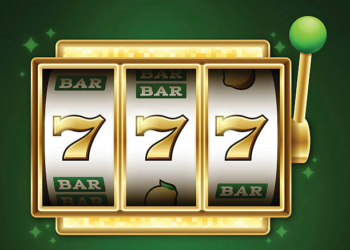Poker is a timeless card game that has captivated players for centuries. One of its core elements lies in the hierarchy of poker hands, which determines the winner in each round. From the elusive Royal Flush to the seemingly unremarkable High Card, understanding the intricacies of the hand rankings is crucial for any poker enthusiast. In this article, we will delve deep into the secrets behind the poker hand hierarchy, exploring the significance of each hand and shedding light on the strategies that can turn the tide in favor of even the most amateur player.
The Foundation of Poker Hands
At the core of every poker game lies the fundamental concept of hand rankings, also known as the poker hierarchy. To comprehend the intricacies of this hierarchy is to unlock the secrets of poker and gain an edge over opponents. The foundation of poker hands lies in understanding the composition of a hand and the power of rankings.
The first step in grasping the poker hierarchy is comprehending the basic elements that make up a hand. A standard poker hand consists of five cards drawn from a standard deck of 52 cards. These cards come in four suits: hearts, diamonds, clubs, and spades. The suits themselves do not hold inherent value in the hand rankings, but they play a crucial role in determining the presence of flushes and straight flushes, as we will explore later.
Once the cards and suits are understood, it is time to delve into the hierarchy of poker hands. The objective of poker is simple: construct the highest-ranking hand among all players at the table. The strength of a hand is determined by its ranking within the established hierarchy. Each hand is categorized based on its rarity and the difficulty of achieving it.
At the pinnacle of the poker hierarchy stands the illustrious Royal Flush. This combination consists of the five highest-ranking cards in a single suit: Ace, King, Queen, Jack, and 10. The Royal Flush is an exceedingly rare occurrence, often heralded as the ultimate achievement in poker. Its significance lies not only in its unbeatable nature but also in the prestige it carries among players.
Below the Royal Flush, we find the Straight Flush, which comprises five consecutive cards of the same suit. While not as elusive as the Royal Flush, the Straight Flush still holds considerable weight in the poker hierarchy due to its rarity and the skill required to achieve it.
Moving further down the hierarchy, we encounter the Four of a Kind, a hand containing four cards of the same rank. The strength of Four of a Kind is influenced by the rank of the cards, with higher-ranked quads holding greater power.
Next, we have the Full House, which consists of three cards of one rank and two cards of another rank. The harmony of three and two creates a balanced hand with significant strategic value.
The Flush, a hand comprised of five cards of the same suit, follows the Full House. Although the individual card ranks do not impact the hand’s strength, high-ranking cards within the Flush can provide an advantage in tiebreaker situations.

A Straight, which is a sequence of five consecutive cards regardless of suit, occupies a position below the Flush in the hierarchy. While not as strong as the Flush, the Straight demands an understanding of the sequential nature of card ranks and the potential challenges it presents.
Further down the poker hierarchy, we encounter Three of a Kind, which consists of three cards of the same rank and two unrelated cards. The strength of this hand is influenced by the rank of the triplet and the accompanying kicker cards.
Two Pair and One Pair, as the names suggest, involve two sets and one set of cards of the same rank, respectively. The strength of these hands lies in the value of the pairs and the potential to form full houses or other combinations in subsequent rounds.
At the bottom of the hierarchy resides the High Card. This hand does not possess any particular combination, and its strength is solely determined by the highest-ranking card in the hand. While the High Card is the weakest hand in the poker hierarchy, it can still prove crucial in certain situations and requires strategic utilization to maximize its potential.
Understanding the foundation of poker hands and the intricacies of the poker hierarchy is crucial for any aspiring poker player. It provides a roadmap for evaluating hand strength, making informed decisions, and formulating effective strategies. By comprehending the nuances of the poker hierarchy, players can navigate the complexities of the game with confidence and increase their chances of success at the table.
Conclusion
In conclusion, understanding the secrets of the poker hand hierarchy is an essential skill for any player seeking success in the captivating world of poker. By grasping the foundation of poker hands and the intricacies of the poker hierarchy, players can elevate their game and make informed decisions at the table.
The poker hierarchy serves as a guide, showcasing the different combinations and their relative strengths. From the elusive Royal Flush to the seemingly unremarkable High Card, each hand holds significance and strategic potential. By recognizing the value of each hand and understanding the odds of achieving them, players can adjust their strategies, bluff opponents, and make calculated decisions to gain an advantage.
Mastering the art of poker requires a deep understanding of the hand rankings. Whether you are playing with friends for fun or in a real money casino, the knowledge of the poker hierarchy can be a powerful tool to enhance your gameplay. It allows you to assess the strength of your hand, predict the potential strength of your opponents’ hands, and make well-informed bets and raises.
Additionally, understanding the poker hierarchy can help you manage risks and optimize your gameplay. By recognizing the relative strength of your hand, you can make informed decisions about whether to fold, call, raise, or go all-in. It empowers you to make strategic moves, capitalize on favorable situations, and minimize losses.

Remember, the poker hierarchy is not solely about the ranking of hands; it also encompasses the psychology of the game. Skilled players know how to read their opponents, identify patterns, and exploit weaknesses. By understanding the hierarchy and the strategic implications of each hand, you can employ psychological tactics to bluff, deceive, and outmaneuver your opponents.
Whether you aspire to be a professional poker player or simply enjoy the thrill of the game, delving into the secrets of the poker hand hierarchy is a journey worth undertaking. It offers a deeper appreciation for the complexities of the game and equips you with the tools to make strategic decisions that can lead to triumph at the tables.
So, next time you find yourself at a real money casino or gathering with friends for a friendly game, remember the importance of the poker hierarchy. Let it be your guide as you navigate the twists and turns of the game, and may it bring you closer to that exhilarating feeling of victory.

















